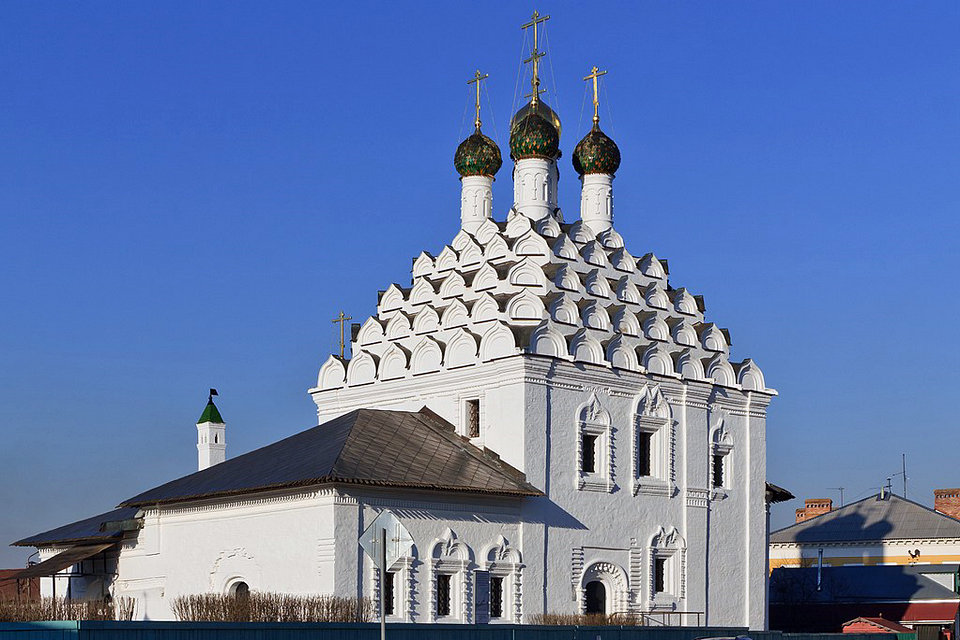Kokoshnik in architecture


Kokoshnik (Russian: кокошник) is a semicircular or keel-like exterior decorative element in the traditional Russian architecture, a type of corbel zakomara (that is an arch-like semicircular top of the church wall). Unlike zakomara that continues the curvature of the vault behind and carries a part of the vault’s weight, kokoshnik is pure decoration and doesn’t carry any weight. Kokoshnik shares its name with the traditional Russian head-dress worn by women and girls.
Kokoshniks were used in the Russian church architecture from the 16th century, and they were especially popular in the 17th century. They were placed on walls, at the basement of tented roofs or tholobates, over the window frames, or in rows above the vaults.
History
Kokoschniki occur for the first time on the 1379-82 built old Dormition of the Assumption in Kolomna on and in the following years become a characteristic architectural ornament of the Muscovite architecture. Other early examples of their use are the Dormition Church in the town in Zvenigorod (around 1400) and the Catholic Church of the Therapontos Monastery in Ferapontovo (1490).
Kokoschniki found particularly rich application to the tent roof churches of the 16th and 17th centuries, where they produce in pyramidal arrangement the harmonious vertical transition between the components, such. B. at St. John’s Church in Djakowo (today to Moscow, 1553/54), St. Basil’s Cathedral (1555-61) or the Christ’s Transfiguration Church in Ostrow near Moscow (1646). From the second half of the 17th century, the Kokoschniki are increasingly transferred to bell towers and Krylza and equipped with rich profiles, ornamentreliefs and majolica in the lunettes . Concise Moscow examples of this are theChurch of the Nativity of the Virgin Mary in Putinki (completed in 1652) and the Holy Trinity Church in Ostankino (1677-83, attributed to Pawel Sidorovich Potechin ).
At the beginning of the 18th century Kokoschnik became increasingly obsolete as a building ornament and reappeared only in the historicist architecture of the second half of the 19th century – now also outside the historical boundaries of the Grand Duchy of Moscow.
Its decorative aspect is used to ensure a smooth transition between the square base of a building and the drum cylinder of a dome or the pyramid of a bell tower. Their shapes can be varied: curved, in brace, triangular. They can be grouped in different ways: overlapping, overlapping.
Source from Wikipedia